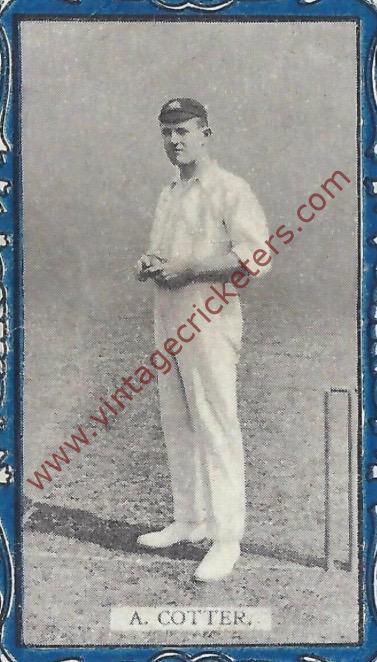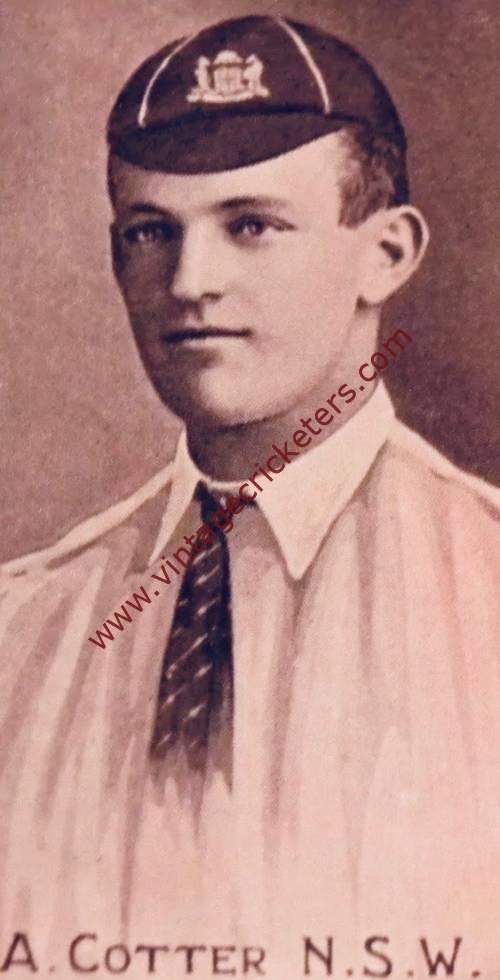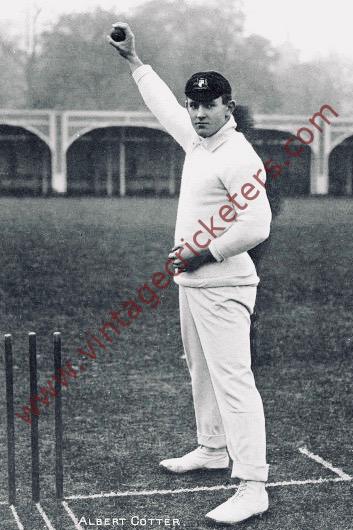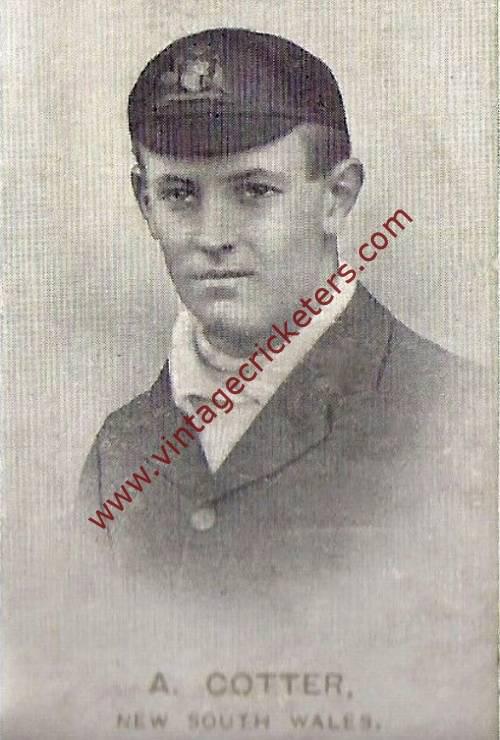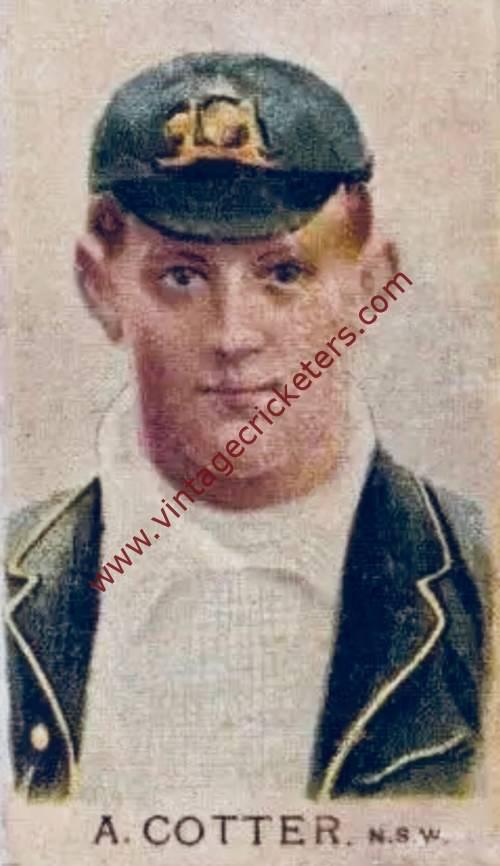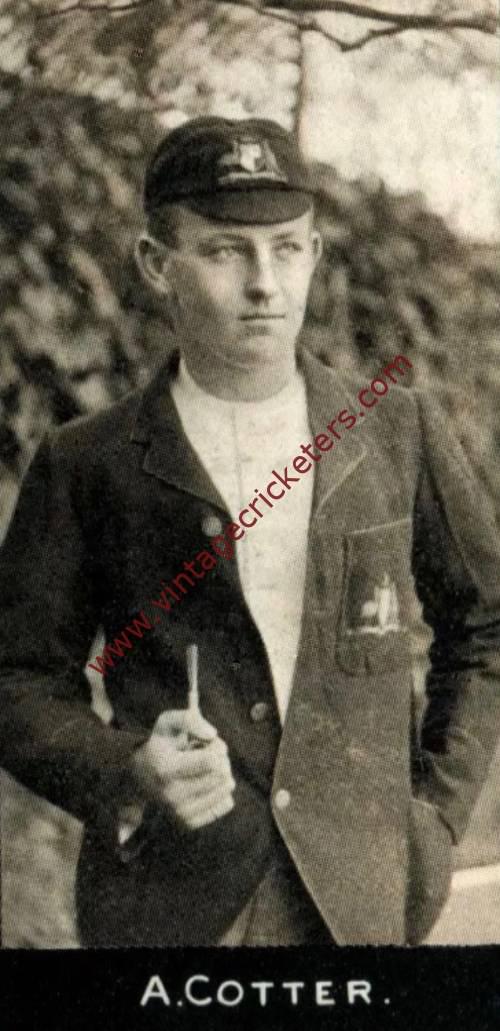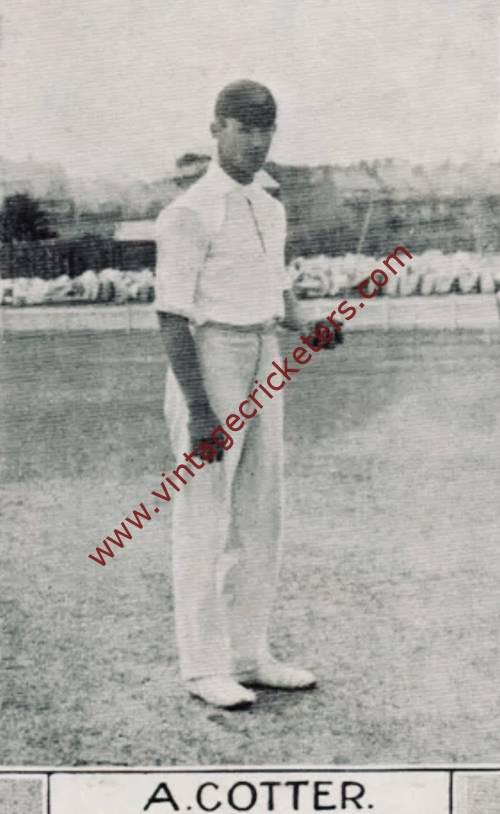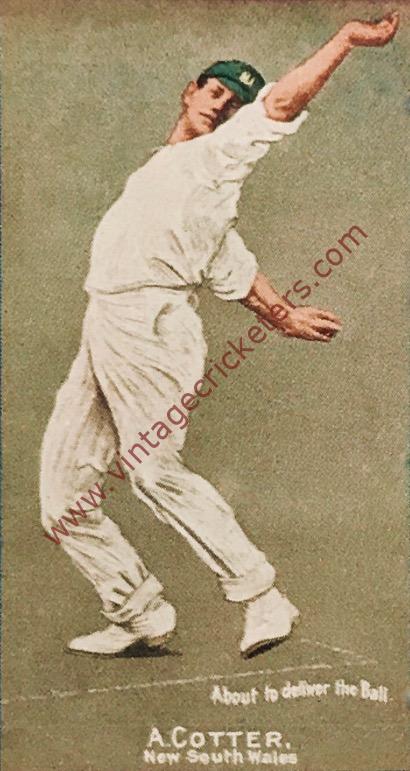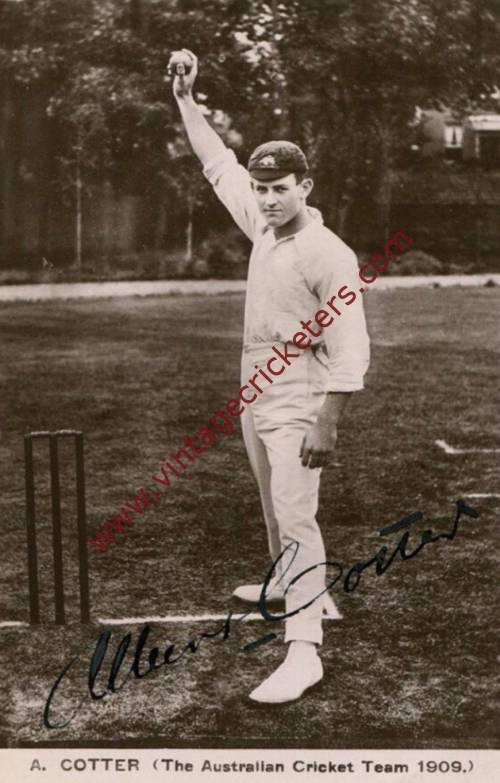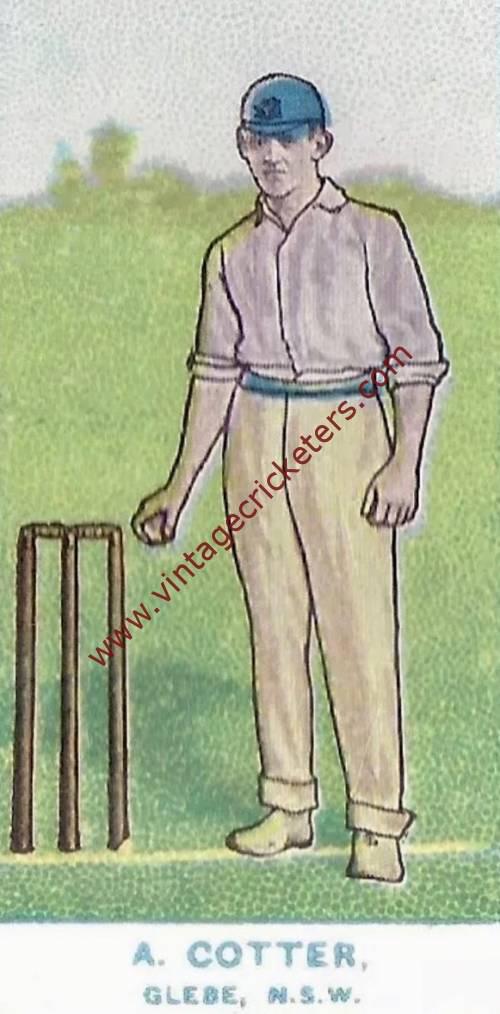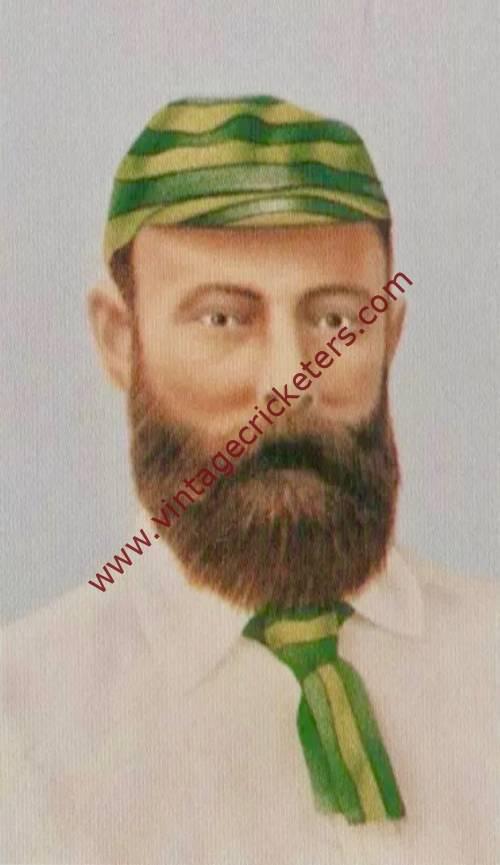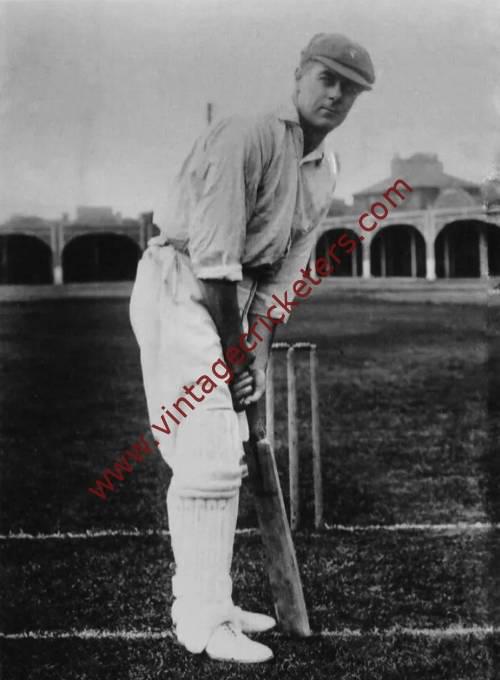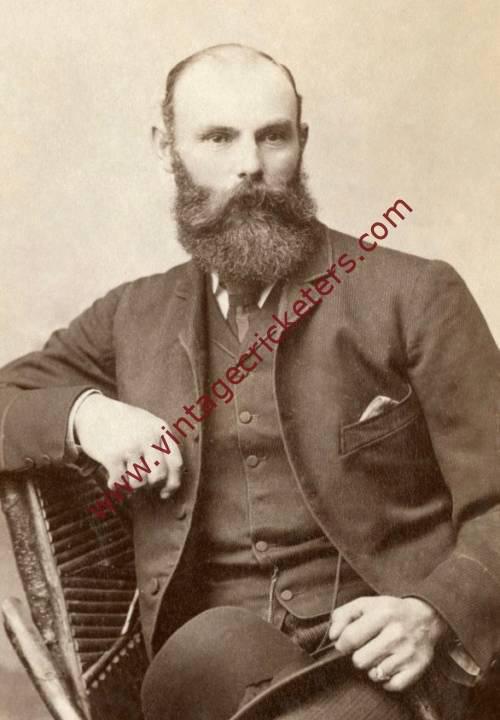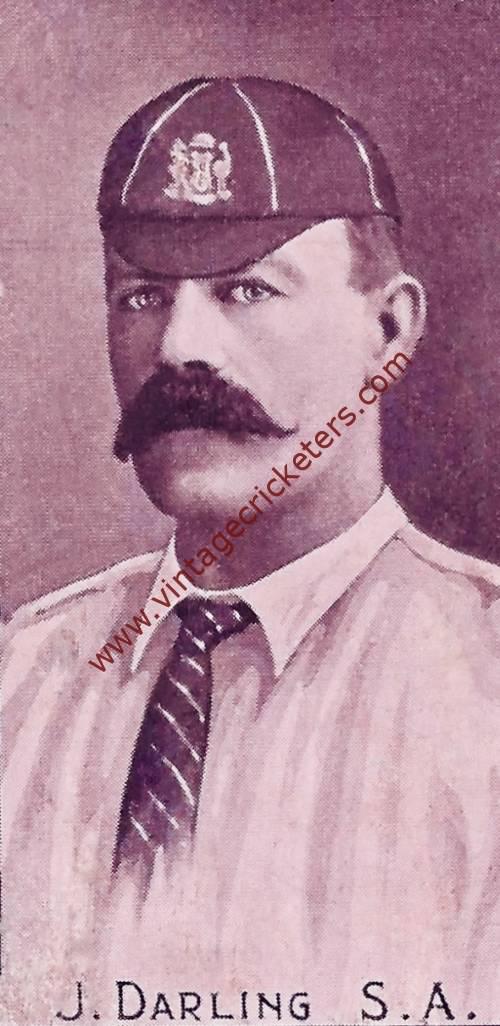Please choose your photo size from the drop down menu below.
If you wish your photo to be framed please select Yes.
Note: 16″x 20″not available in a frame.
Images can also be added to accessories. To order please follow these links
£8.95 – £49.95
Please choose your photo size from the drop down menu below.
If you wish your photo to be framed please select Yes.
Note: 16″x 20″not available in a frame.
Images can also be added to accessories. To order please follow these links
The maximum number of views of this element is reached.
Please contact the webmaster to enable unlimited views.
Macquarie, Sydney, Australia born Albert “Tibby” Cotter was arguably the best fast bowler through the first decade of the 20th century. Although only 5’8″ tall, the same height as Harold Larwood, he had a reputation for shattering stumps with his express deliveries and did so on at least 20 occasions. While regarded as the fastest of his era in Australia with powerful chest and shoulders (his pace saw him nicknamed “‘Terror’ Cotter” by English fans) he did not always have the control to back it up, hitting W.G.Grace on the body with a full toss on his first tour of England.
Cotter was a school-mate of Warren Bardsley and played his grade cricket for Glebe. He was also a more than useful batsman, and in a grade match for Glebe he once smashed 152 in 70 minutes in an innings which included 16 sixes. He made his first class debut for New South Wales in 1901 and played 113 first class matches between then and 1914. He made his Test match debut for Australia against England at Sydney at the end of February 1904. In his second Test – the last of the Series at the MCG – he took 8-65 to guide Australia to victory.
He was included in the 1905 side which toured England, taking 121 wickets at 20.19, playing three Tests and taking 7-148 in the first innings at The Oval. He took five-for in the first two Tests of the 1907-08 Ashes, and in England in 1909 he took 17 wickets at 21.47 in another Australian Ashes success.
He was again in good form against South Africa in 1910-11 but the following season struggled against England in a series increasingly overshadowed by the bitter dispute between leading players and the Australian Cricket Board. As a result, he was one of six leading cricketers who refused to tour England for the 1912 Triangular Tournament. That proved the end of his international career. Cotter played 21 Test matches, and took 89 wickets at 28.64 a piece, with 7 five wicket innings. He also averaged just over 13 with the bat, and had a Test high score of 45.
In all first class cricket, Cotter took 442 wickets at 24.27 a piece, with 31 five wicket innings and 4 ten wicket matches, and a best bowling performance of 7-15. He made four fifties with a highest score of 82 and a batting average of 16.89.
After the start of the First World War, Cotter joined the Australian Imperial Force (AIF) in April 1915, aged 31. The enlistment of a former sporting champion was seen as powerful publicity for the AIF recruiting campaign. Despite having no great riding ability, he joined the Australian 4th Light Horse Brigade and took a late part in the Gallipoli campaign. Later he transferred to the 12th Light Horse and was commended for his “fine work under heavy fire” during the second battle of Gaza. The official history remarked: “he behaved in action as a man without fear”. He declined promotion.
Whilst serving in the AIF, he participated in a unique Australia vs. England “Test Match” played in 1917 between two teams made up from the Australian and British troops stationed in Palestine. On 31st October 1917 at Beersheba the 12th Regiment captured Beersheba by a brilliant cavalry-style charge. Although Cotter was there as a stretcher-bearer, he actually took part in the charge itself, and “was shot from the saddle during a mounted charge on a Turkish position”. At the end of the charge, as troops dismounted to engage the enemy, a Turk shot Cotter dead at close range.
“Cotter was killed in a mounted charge on Beersheba at dusk on the 31/10/17. Early next morning, together with Trooper O’Rourke of our troop, I was detailed to collect saddlery and personal effects. We were surprised to find Cotter amongst our casualties, knowing he had been detailed for that day as a stretcher bearer. It seems he had changed places with another Light Horseman because he wanted to be in the mounted charge.” – “Ex-Trooper”, The Crookwell Gazette, 1st March 1933.
One of his brothers, John, had been killed in action three weeks earlier in Belgium on 4th October 1917.
On 25th January 1919, a memorial plaque dedicated to Tibby Cotter was unveiled in the Members’ Pavilion of the Sydney Cricket Ground during a break in play in the Sheffield Shield match between New South Wales and Victoria. In February 2015, the Albert Cotter Bridge opened across Anzac Parade, Sydney opposite the Sydney Cricket Ground, and in 2017, in commemoration of the centenary of Cotter’s death, the fourth round of Cricket NSW’s Premier Cricket was designated the Tibby Cotter Round.
| Weight | N/A |
|---|
